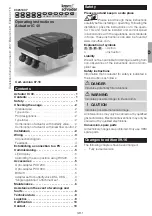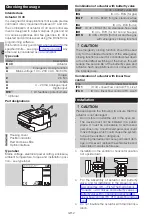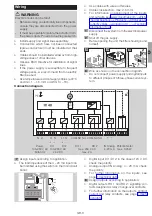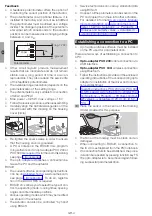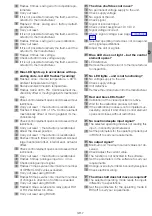
GB-3
D
GB
F
NL
I
E
Wiring
WARNING
Electric shocks can be fatal!
–
Before working on electrically live components,
ensure they are disconnected from the power
supply.
–
It must be possible to isolate the actuator from
the power supply. Provide a double pole switch.
▷
Install supply and signal lines separately.
▷
Conductors which have not been connected
(spare conductors) must be insulated at their
ends.
▷
Cables should be installed well away from high-
voltage lines of other devices.
▷
Observe EMC Directive for installation of signal
lines.
▷
If the power supply is susceptible to frequent
voltage peaks, we recommend that an electric
filter be used.
▷
Use temperature-resistant supply cables (≥ 90°C
and min. 1 – 1.5 mm² or AWG 14 – 18).
▷
Use cables with wire end ferrules.
▷
Cable cross-section: max. 2.5 mm².
▷
For information on assignment of the inputs
and outputs, see www.docuthek.com
1
Disconnect the system from the electrical power
supply.
Shut off the gas supply.
▷
Before opening the unit, the fitter should ground
himself.
3
4
5
6
Wire as shown on the connection diagram.
▷
Do not connect power supply and digital inputs
to different phases of a three-phase current sys-
tem.
Connection diagram
N L1
L1 N
L1 N
100–230 V AC
50/60 Hz
COM NC NO COM NC NO
100–230 V AC
24 V DC
max. 230 V AC
max. 2 A
Power
DI 1
DI 2
RO 1
RO 2
IN Analog
4–20 mA
Potentiometer
max. 0,25 W
7
Assign inputs according to application.
▷
The load impedance of the 4 – 20 mA input can
be modified using the switch on the main circuit
board.
ON
1
50 Ω
ON
1
250 Ω
50 Ω
250 Ω
▷
Digital input DI 1/DI 2: in the case of 24 V DC,
check the polarity.
▷
Analogue input IN Analog: 4 – 20 mA, check
the polarity.
▷
For further information on the inputs, see
page 9 (Technical data).
8
Assign outputs according to application.
▷
Digital outputs RO 1 and RO 2: signalling con-
tacts designed as relay change-over contacts.
▷
For further information on the outputs, contact
current and relay contacts, see page 9 (Tech-
nical data).

